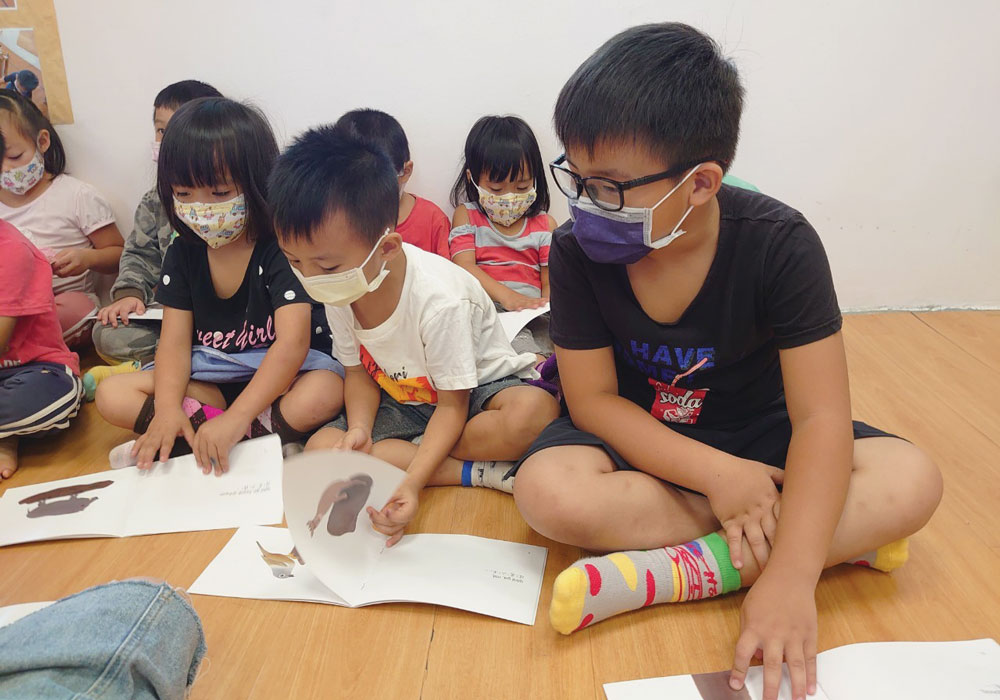
In an isolated Taiwanese mountain village, more than 8,000 miles away from the University of South Carolina campus, a 5-year-old child recites a few newly learned Atayal words over breakfast: “grandpa,” “squirrel,” “basket.” While playing outside, he makes sentences with his friends: “What is this?” “Where are you going?” “Grandma is weaving.”
These words and phrases may seem simple, but for Taiwan’s indigenous Atayal people, they are significant. Just as it did within indigenous populations in the U.S., colonization in Taiwan erased entire languages. When Mandarin became the nation’s official language in 1945, and other languages were prohibited from public use, Atayal was nearly lost.
So last fall, education professor Catherine Compton-Lilly traveled to Taiwan to help two communities reclaim it. Compton-Lilly is the John C. Hungerpiller Professor in the College of Education and studies children’s literacy and elementary education. As a guest professor at National Tsing Hua University and a Fulbright scholar, she partnered with other researchers and Atayal community members to combat language loss by creating a series of bilingual children’s books.
“The grandparents might speak the language, but the parents generally do not,” she says. “Our goal was to reestablish with very young children so that they can hopefully continue to learn.”
The Atayal people live in central and northern Taiwan. Daily life can vary dramatically depending on geographic location. Compton-Lilly worked with one community outside Taipei, the nation’s capital, where Western and Chinese culture have been influential. The other community was a remote Atayal village that can only be reached by driving three-and-a-half hours into the mountains — provided the roads aren’t washed out.
Her team met with tribal leaders from both communities for guidance on book topics, images, vocabulary and language structures. While some books covered ideas relevant to both communities — topics such as planting millet and weaving — others were developed to address community-specific interests, like traditional foods and safety.
The result? Eight books targeting ages 4-6 and illustrated with brightly colored drawings or, in some cases, photos depicting Atayal life. But the project didn’t end there. The communities have gone on to create 23 books of their own and have even put some of the language lessons to music.
“We never asked them to create music, but both tribes spontaneously started writing songs because songs are a way of learning language,” Compton-Lilly says. “Many of us can sing ‘Silent Night’ in German but can’t speak any other German because we learned it in choir. Putting things to music is a really good way of learning language, and the teachers intrinsically seem to understand that.”
For older Atayal community members, hearing children speak the language again has been emotional. According to one of the teachers, a firefighter at a local fire station was moved to tears after hearing the language during a class visit. Responses like those have kept the children engaged.
“The children are generally very excited because what happens is they learn a little Atayal, they go home, they speak it to Mom or Grandma, and then they get this huge positive response,” says Compton-Lilly. “So then they start thinking, ‘Oh, maybe this is something cool.’ We’ve got 4- and 5-year-olds that will go off into the book corner and just sit there and say the words to themselves. They’re doing it in their own free time.”
Throughout the project, Compton-Lilly’s biggest research question has been how to define her own role. Even though she initiated the project, she acknowledges she is an outsider. Her team has been mindful about allowing the communities to take the lead and to continue making books without her.
“We really tried to step aside at every turn to say, ‘How do you want this to be?’” she says. “I have all this expertise on literacy, but that doesn’t matter. That’s not what this is about.”
Back in South Carolina, she has recently launched a similar book project for the state’s Cherokee communities. While the Cherokee in other southern states were forced from their homes and relocated along the Trail of Tears in the 1830s, South Carolina’s Cherokee remained behind, scattered across the Upstate and the Blue Ridge Mountains. Many of their descendants remain today, though the state does not have a federally recognized tribe.
Compton-Lilly worked with a Cherokee language teacher to develop four books. Chief Lamar Nelson of the Eastern Cherokee, Southern Iroquois and United Tribes of South Carolina will guide the effort. “Again, the boss is going to be Chief Nelson,” she says. “How does he want to disseminate? What does he want us to do? How can we contribute?”
Language materials for both the Atayal and Cherokee projects will be available online for free so that children can continue exploring the languages long after her involvement ends.
“What we hope is that they learn enough to be able to participate in community activities, to talk to the elderly people in their community, and that in turn will allow them to continue to learn — not just from us,” she says. “They can be learning from people in the community as well.”
